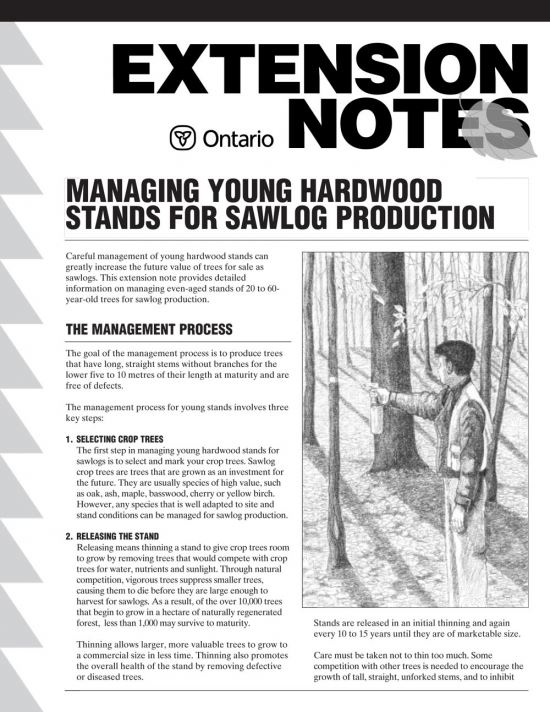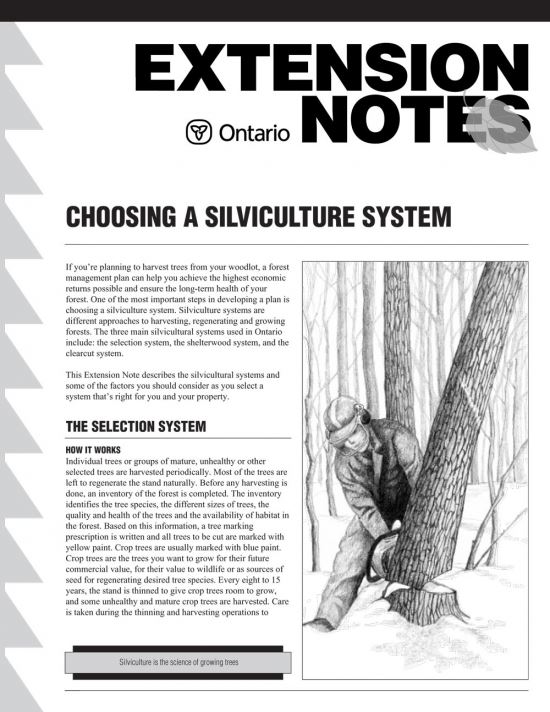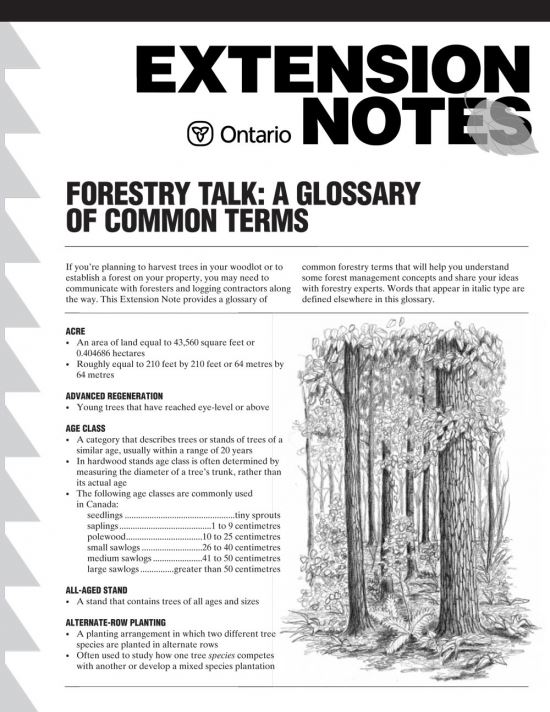- About
- Member Resources
- Woodland 101
- FOREST MANAGEMENT FOR INCOME
Forest Management For Income |
Making Financial SenseMost forest owners are aware of the potential for income from harvests, but many do not know that harvest income can be increased through good forest management. A management plan that outlines good forest management options can provide a wide variety of economic and environmental benefits to the landowner. How Does Your Forest Grow?
When optimal long-term financial returns are the objective of a landowner, a forest should be managed to maximize the growth of trees, which can be used to produce high-quality lumber (e.g. sawlogs). This growth can be measured in board feet (fbm); the amount of wood needed to make a board with the dimensions of one foot by one foot by one inch. For example, Figure 1 shows that a woodlot in eastern Ontario can be managed to produce an additional 148 board feet per hectare (60 fbm per acre) per year by periodically removing low-quality trees (i.e. thinning) and retaining an optimal number of sawlog quality trees. Over a period of 20 years, a 40.5-hectare (100 acres) woodlot could realize approximately 120,000 board feet through good management. The Benefits of ThinningThinning or improvement cutting is the removal of low-quality trees to increase the amount of light, water and nutrients available to the remaining trees. Thinning results in an increased growth rate of the remaining trees. If these trees have been selected to remain because of their timber potential, this increase in growth provides an investment return to the landowner. Trees between 30 cm and 50 cm in diameter in a managed forest can easily grow 5 cm in diameter every 10 years. At this rate, they almost double in value every 10 years because they are growing large amounts of high-value wood suitable for lumber and the quality of the lumber, as reflected in log grade, is improving. Not only are the trees accumulating board feet rapidly, but the price per board foot in the tree is also increasing. Landowner OptionsMost forests in southern Ontario are managed using either a diameter limit system or based on a forest management prescription. Under a diameter limit cut, all trees above a preset diameter (usually 30 cm) at chest height are cut. Under a forest management prescription, specific trees are selected to be cut or left, based on their growth potential or their benefit to natural regeneration or wildlife. This selection process is based on many individual tree characteristics, not just tree size. Each tree to be cut is marked with paint (usually yellow) to ensure that the prescription is followed. There are five good reasons to follow a forest management prescription vs. a diameter limit cut. 1. Financial ReturnsDiameter limit cutting reduces the long-term financial benefits that can be derived from a managed woodlot. Under this system, most trees greater than 30 cm in diameter are harvested. Many of these trees would respond well to thinning and could produce a very high rate of return to the landowner if left to grow to maturity. 2. Future GrowthThe thinning provided by a diameter limit cut is not uniform. It is simply a result of cutting where there are large trees. As a result, some areas of the forest which had large trees are cut heavily, while other areas of small trees are not cut at all. In the uncut areas, the forest will continue to grow slowly because of overcrowding, and the financial benefits of thinning will not be achieved. Poor quality, small diameter trees with no potential to develop into sawlogs should be cut and removed from the forest to increase growth of the remaining timber-quality trees. In most areas of the province there are markets for fuelwood and pulpwood to permit sale of these smaller trees. In areas that are cut too heavily, there will be insufficient large trees to capture the increased light, moisture and nutrients available from thinning. As a result, growth will occur largely on young seedlings. In addition, those trees which remain behind may not be of high sawlog potential. Therefore, the lumber-producing capability of the forest will be reduced significantly. Heavy cutting also results in a loss of potential value of the smaller but high-value trees, which are left behind. Trees less than 30 cm in diameter tend to have branches located low on the stem. In an uncut or managed forest, a sufficient number of trees are present to shade these young trees, causing the lower branches to fall off due to a lack of sunlight. This will result in an increase in the 'clear length' of the tree over time (the length of the bole with no branches), with a resulting increase in high-quality, knot-free logs for lumber. After a heavier cut, these small trees are exposed to much more sunlight. As a result, they tend to keep their lower limbs and lose the potential to develop further clear length. In fact, many trees may develop new branches on the trunk after heavy cutting, which actually will reduce their clear length and future value. 3. Forest RegenerationA forest management prescription can be prepared to ensure that a new forest of desirable species grows after cutting. For instance, sufficient red oak and white pine trees can be left for seed and cover to enhance the regeneration of high-value oak and pine seedlings. In a diameter limit cut, the forest generally regenerates to whatever young trees are present on the forest floor at the time of cutting. Such procedures rarely result in the regeneration of an oak or pine forest. On the contrary, the open conditions, resulting from heavy cutting, often favour the regeneration of low-value timber species like poplar. 4. Wildlife ValuesLandowners may wish to leave some trees in their forest to provide high-quality wildlife habitat including nesting sites, mast and cover. These values must be addressed in the forest management prescription. 5. Tree-Cutting BylawsIn some municipalities, diameter limit cutting is a contravention of local tree-cutting bylaws and is not in accordance with good forestry practices. Where to Get HelpBefore beginning harvesting operations in your woodlot:
Suggested ReadingAdditional information relating to selection cutting and managing your woodlot for sawlogs is available on-line from the LandOwner Resource Centre. Or you can obtain copies of these extension notes from the LRC by calling (613) 692-2390. |
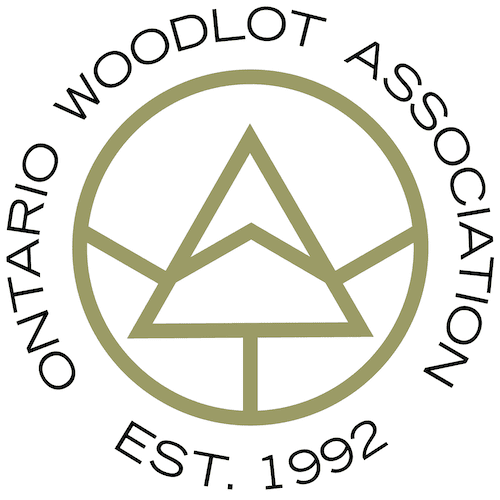
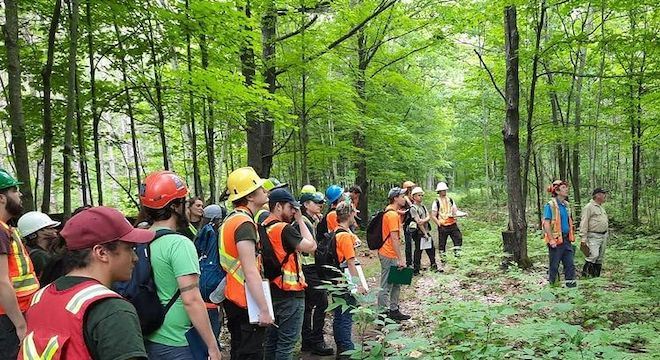
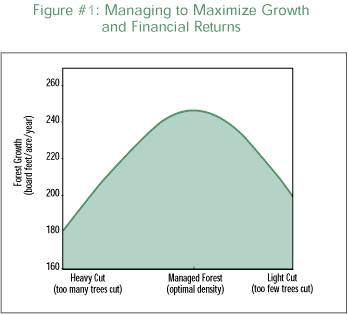 A forest grows much like a garden. When there are a lot of trees, they compete for light, water and nutrients. The result of too much competition is a lot of slow-growing trees of moderate timber quality. When there are too few trees, growth potential is lost, and much of the growth is concentrated in young seedlings, again of varying quality. In either case, the forest is not producing timber at its maximum potential.
A forest grows much like a garden. When there are a lot of trees, they compete for light, water and nutrients. The result of too much competition is a lot of slow-growing trees of moderate timber quality. When there are too few trees, growth potential is lost, and much of the growth is concentrated in young seedlings, again of varying quality. In either case, the forest is not producing timber at its maximum potential.